Every sport has a specific uniform. In fact, most professions do. It is how we distinguish doctors from policemen or musicians from athletes.
When it comes to physical activity, safety is the one goal that all sportswear shares. Safety performance is among the most important characteristics sportswear can have, and nothing is more important than your helmet.
Helmets seriously decrease the risk of brain injury, but every helmet needs to be calibrated to the type of activity being performed. The risk of falling off a mountain bike can even be a fatal one, which is why a mountain bike helmet is at least as important as the mountain bike itself.
Contents
- How to Choose the Right Mountain Bike Helmet
- Top 10 Best Mountain Bike Helmets 2024
- 1. Best Overall Mountain Bike Helmet: Giro Chronicle
- 2. Best Premium Mountain Bike Helmet: Bell Super 3R
- 3. Best Trail Mountain Bike Helmet: POC Tectal Race Spin
- 4. Best Downhill Mountain Bike Helmet: Troy Lee Designs Stage
- 5. Most Breathable Mountain Bike Helmet: Troy Lee Designs A2
- 6. Best Lightweight Open-Face Mountain Bike Helmet: Smith Optics Forefront 2
- 7. Most Comfortable Mountain Bike Helmet: Giro Montaro
- 8. Safest Mountain Bike Helmet: Giro Switchblade
- 9. Best Casual Mountain Bike Helmet: POC Octal X
- 10. Best Lightweight Full-Face Mountain Bike Helmet: Leatt DBX 3.0
- Complete Guide to Mountain Bike Helmets
- Final Thoughts
How to Choose the Right Mountain Bike Helmet
Choosing a good helmet sounds like an easy task. But when you are faced with all the different models, shapes, colors, and product features that every site will blind you with, it is necessary to know what exactly to look for. Your safety should be your number-one priority, so why not get the perfect helmet for you from the first buy?
We managed to narrow down the choices in this article, based on the following criteria:
Safety
You have to be prepared for the unpredictable nature integral to the sport. Don’t just buy a helmet thinking it won’t come in handy. It would be nice if it didn’t, but it would be considerably worse if it does and you are not adequately equipped for the injury. Three safety certifications (CPSC, ASTM, and Snell) must be earned by all helmets for sale, so you don’t have to worry about that, but there’s a bit more to it for safety—we’ll look at each helmet’s frame, padding, and other safety features that ensure that each helmet on this list does its job.
Design
Think about the types of mountain bike rides you most frequently take. Some helmets are more suitable for cross country (XC), while enduro helmets may make you feel safer if you ride downhill. If you think you’ll be rising just as much uphill, an all-mountain trail-riding helmet could be your perfect head brace. Any mountain bike helmet will work in all scenarios, but some are more suited to specific types of riding.
Comfort
No helmet, no matter how safe, will be worth wearing if its so uncomfortable that it constantly distracts you. Though protecting your head is the most important factor to consider, we’ll also look at fit, padding, breathability, weight, and everything else that makes or breaks a helmet’s comfort level.
Choosing a helmet that meets your safety, design, and comfort standards make an activity such as mountain biking more rewarding and enjoyable. If you feel your safety gear is sturdy and sits right, you can be motivated to exceed your limits without feeling like a reckless daredevil. As the perfect mountain bike helmet for you depends on how you intend to use it, there is no single perfect mountain bike helmet. In this article we will go over the best 10 mountain bike helmets that riders are raving about, so you can confidently invest in gearing up.
Top 10 Best Mountain Bike Helmets 2024
1. Best Overall Mountain Bike Helmet: Giro Chronicle
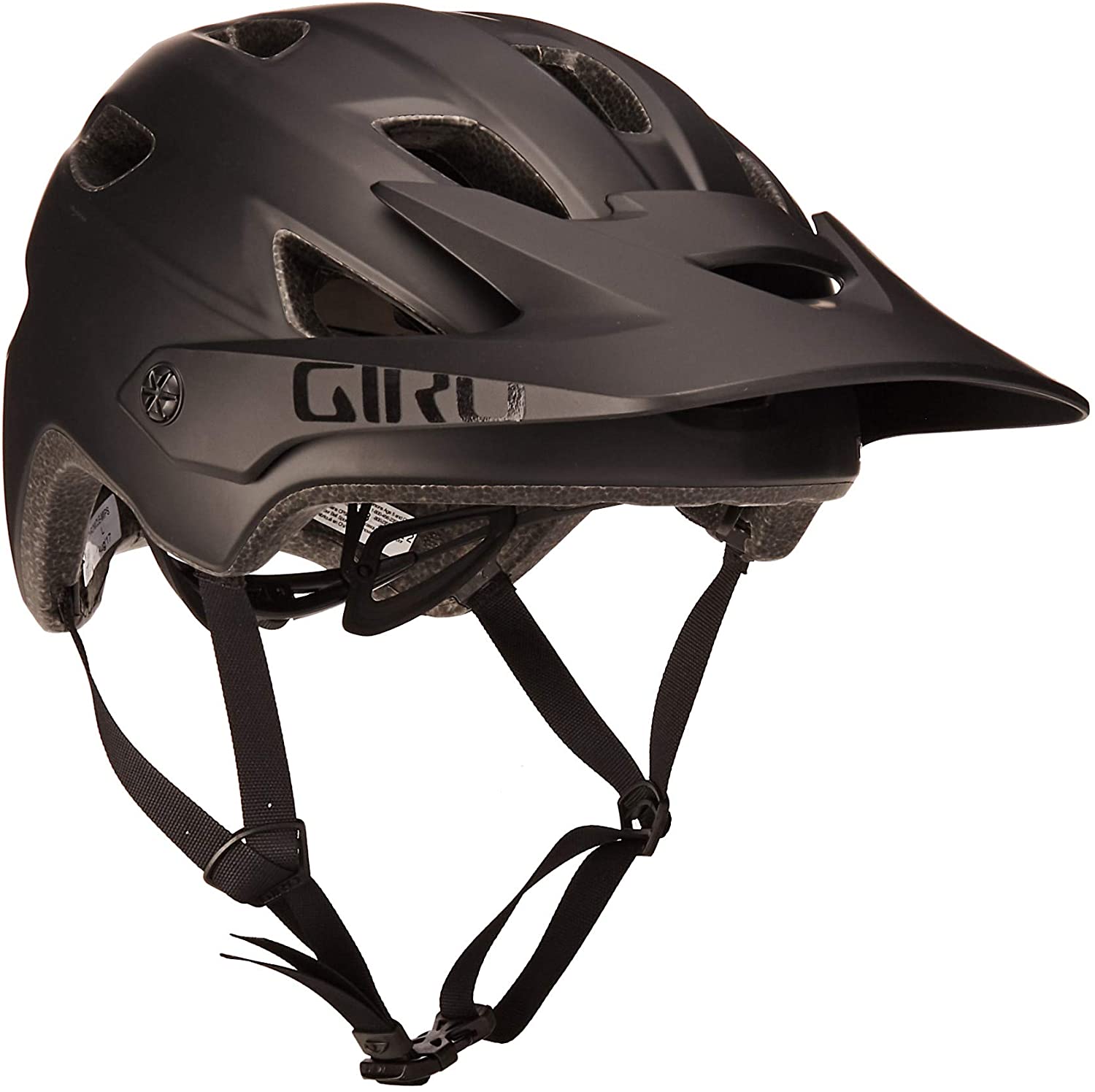
Editor’s Rating:
Quick Facts
Type: Cross-country
Face: Open
Sizes: Small to extra large
Safety System
This helmet uses Multi-directional Impact Protection System (MIPS) technology. Most high-end helmets use MIPS. Most falls take place at a certain angle rather than falling straight forward or backwards, which can cause rotational forces on impact. The brain is very vulnerable to rotational forces, so the MIPS brain protection system reduces the risk of impact drastically.
Comfort
The Chronicle is comfortable to wear all year round. The 14 cooling vents push the heat upwards and out, which makes the helmet cool enough to wear during the summer or in hot climates—though the design of the helmet won’t stop sweat from getting in your eyes when you’re really pushing it. There is enough Coolmax plushy padding on the inside that makes it just tight enough for impacts to be reduced while still not smothering your head.
Size and Weight
There are 4 available sizes in which the Chronicle helmet comes in. The Roc Loc 5 fitting system makes it easy to adjust the fit tension with a single one-hand move. The In-Mold construction system makes the helmet feel light on the head at only 13 ounces. Here is a video where you can see exactly how it will look on you, and how heavy you should expect it to feel.
Design
Giro’s Chronicle has an open-face design. Its moto-style visor is adjustable, protecting your eyes and preventing the sun from distracting your vision. This P.O.V.+ visor can be adjusted in three different positions, the top one allowing for goggles to be stored. Make sure you try on a few goggles first, as some may feel a bit pushed down on the nose.
Value
The reason the Chronicle helmet by Giro is our number one pick is that all the features it comes with are usually double the price. This is a sturdy, comfortable helmet that is highly affordable for those who want to use their budget wisely. Since most mountain bike helmets with an MIPS system don’t go below three digits in price, this helmet is at the bottom of the price barrel but on top in terms of value for money.
Verdict
With its wind tunnel ventilation system of 14 vents, soft but durable EPS impact foam, and in-mold polycarbonate shell, this helmet is guaranteed to have you covered for all-mountain riding purposes. It is lightweight and fits securely on your head without causing discomfort. For an open-face helmet with MIPS safety, this helmet is bang on the buck.
- Great value for money
- MIPS brain protection system
- In-mold polycarbonate shell
- 14 vents for cooling
- Adjustable P.O.V. + visor
- Doesn’t prevent sweat from running down the eyes
- Goggles don’t sit comfortably as they are pushed down on the nose
2. Best Premium Mountain Bike Helmet: Bell Super 3R
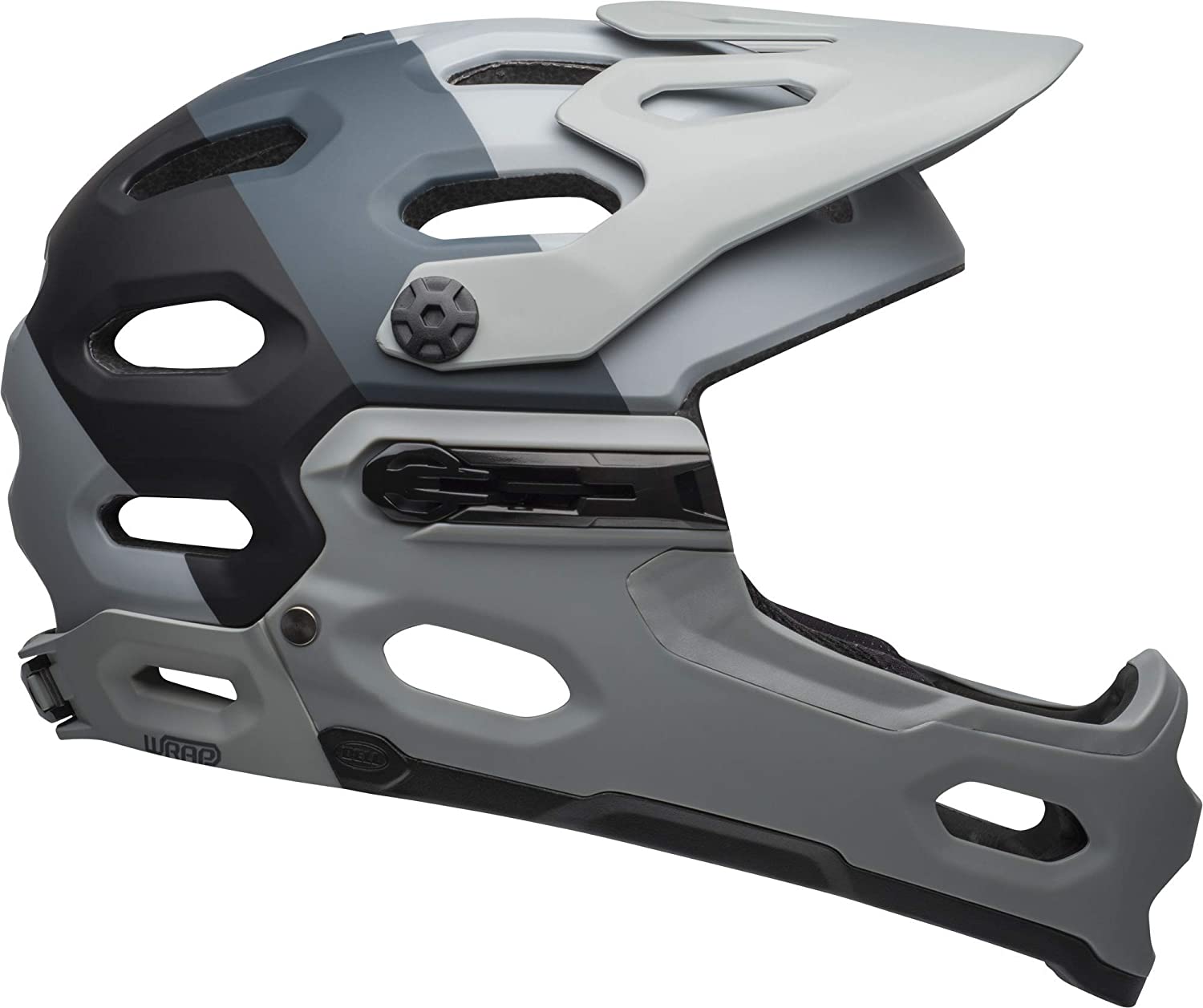
Editor’s Rating:
Quick Facts
Type: Downhill and all-mountain
Face: Convertible
Sizes: Small to large
Safety System
The Bell Super 3R uses an MIPS system which is sure to prevent head damage in case of an accident. Additionally, it comes with a removable chin guard which can be taken off easily without using any tools.
Comfort
The Super 3R delivers comfort in both full-face and half-lid mode. The 23 vent holes ensure plenty of ventilation and its shape easily accommodates protective goggles of any size. It contains enough soft cushion to have it embrace your face comfortably without feeling squished. Taking the chin guard off (which contains 6 vent holes) still won’t make it feel wobbly. Unfortunately, the visor isn’t so well-designed, and it’s sometimes hard to tell if its attached properly.
Size and Weight
This helmet has a polycarbonate protective shell on the outside, while on the inside it is equipped with real silver fibers and X-Static padding. These materials prevent the appearance of bacteria or fungi that may be caused by sweat or odor deposition. If you leave the chin guard on, it weighs around 27 ounces, whereas without it, it lightly rests on your head at almost 16 ounces.
Design
The Super 3R can adapt to being used as both a full-face and an open-face helmet. The chin guard can be easily taken on or off due to an easy 3-step removable system. If you feel like recording any exciting or visually-stimulating trail rides, the camera mount on top of the helmet accommodates a GoPro, so you are encouraged to use it. Goggles or protective glasses can sit comfortably under the visor, in case you need them.
Value
Although it exceeds the middle of the price spectrum for mountain bike helmets, Bell’s Super 3R has enough protective and useful features to make it worth your investment. Due to its versatility, you essentially get 2 helmets by one of the top manufacturers in the field at a more than decent price for each. We found this to be the best helmet for enduro racers and all-mountain riders who don’t want to deal with heat and sweat.
Verdict
For what it offers, this helmet is one of the more lightweight choices. It has plenty of ventilation and is suitable for enduro riders in search of rough terrain, as well as trail riding for nature enthusiasts. Riding downhill can be achieved more confidently with the chin bar attached.
- Can be used as both an open-face or full-face helmet
- Plenty of ventilation
- GoPro camera mount
- Padding is removable for washing
- Lightweight but study
- Only comes in 3 sizes (small, medium, large)
- The visor is not held in place with defined clicks
3. Best Trail Mountain Bike Helmet: POC Tectal Race Spin
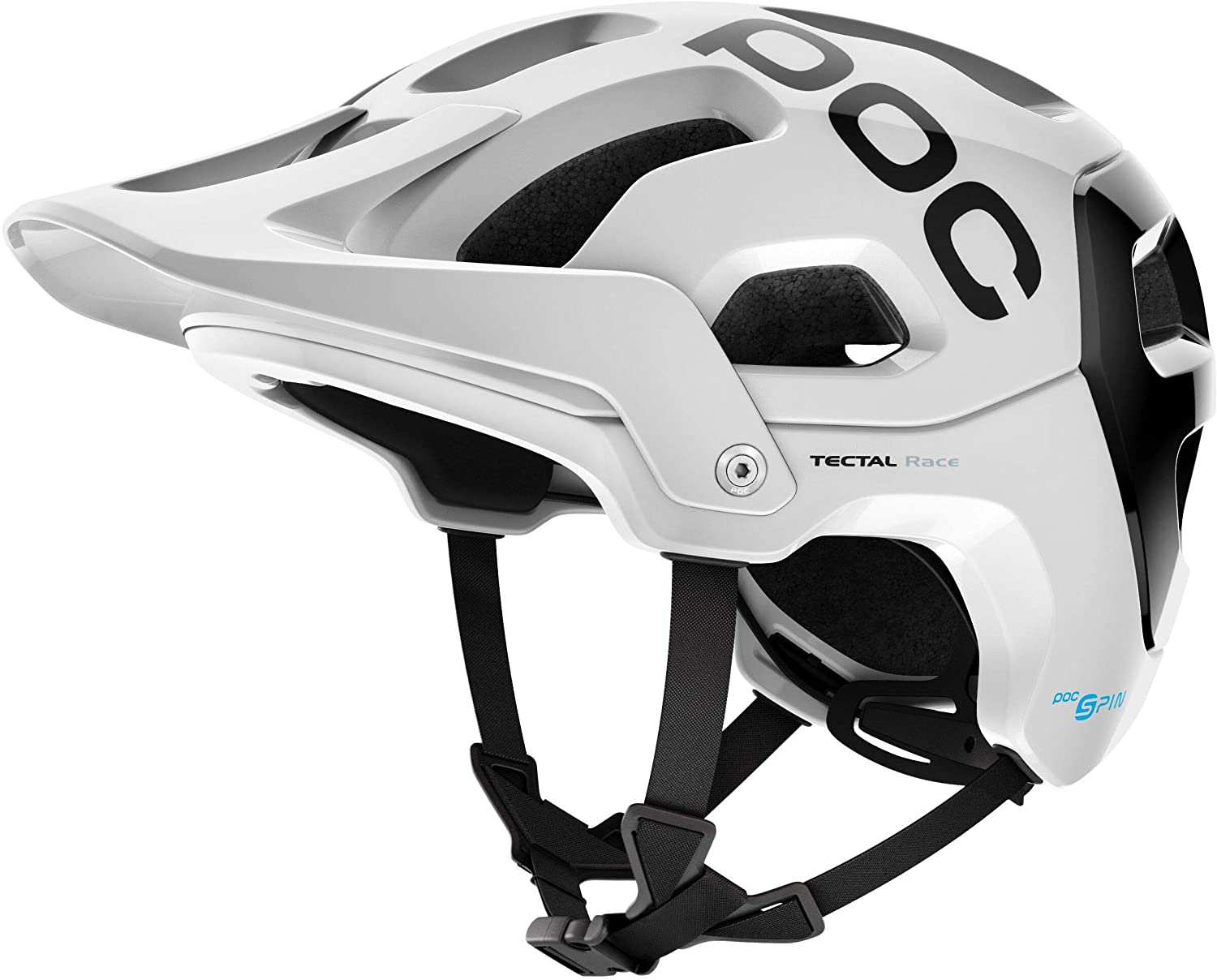
Editor’s Rating:
Quick Facts
Type: Trail
Face: Open
Sizes: Extra small to 2-XL
Safety System
The most important characteristic of the Tectal is POC’s patented slip plane technology called SPIN, which is similar to MIPS. SPIN relies on the helmet’s interior padding to prevent rotational forces from impacting the brain in case of an angled fall. To top it off, it has an aramid fiber grid that absorbs the forces of an impact, dissipating them and reducing the chances of skull injury.
Another revolutionary feature is the embedded NFC chip with a built-in RECCO system. The RECCO was initially designed to locate lost skiers through merciless snow conditions. This Near Field Communication chip contains a medical profile of the user, as well as emergency contacts. By using a compatible app, this information can be crucial for medical personnel in case the rider is unable to communicate.
Comfort
This mountain bike helmet has 15 vent holes that provide excellent ventilation. It fits securely on your head thanks to its 4-point harness system. The Y-shaped straps can be easily adjusted in any direction to make the helmet fit comfortably on your head. It comes with an adjustable visor, and should you need to use them, there is also a goggle strap on the back of the helmet.
Size and Weight
The helmet comes in plenty of sizes you can choose from, ranging from XS to XXL. Without the MIPS system, you won’t feel like you’re wearing an external plastic head wrapped on top of your own, which makes it feel more like your head and the helmet are one. The Tectal weighs approximately 12 ounces, while the weight of the RECCO chip is imperceptible—though the weight is concentrated towards the front of the helmet, which some riders might find uncomfortable.
Design
The open-face design of the Tectal makes you more alert to your surroundings. The opening for the ears makes it easy to hear things that would normally be blocked out by a chin bar or a more rigid design. It has a unibody construction and the helmet covers a larger part of the back of your head compared to other helmets.
Value
This is a high-end helmet that offers as much comfort and safety as you would expect from a helmet in this price range. Its ventilation, cool color options, build and design make this helmet worth it for XC and even all-mountain riders who approach wilder parts of nature. The little extra you spend on it can make all the difference and give you the peace of mind you deserve and need while riding.
Verdict
It is very comfortable to wear and it wraps tightly around your head without seeming like there is “too much helmet”. The ventilation was tested in a wind tunnel so you can rest assured the helmet will keep your head cool. Also, the RECCO chip simply puts your mind at ease, in the unfortunate event that it should ever be used.
- SPIN safety system
- Lightweight
- RECCO reflector and chip
- Good size and color options
- Not cheap
- Because of the extra rear protection, it can feel like it is weighing too heavily on the front
4. Best Downhill Mountain Bike Helmet: Troy Lee Designs Stage
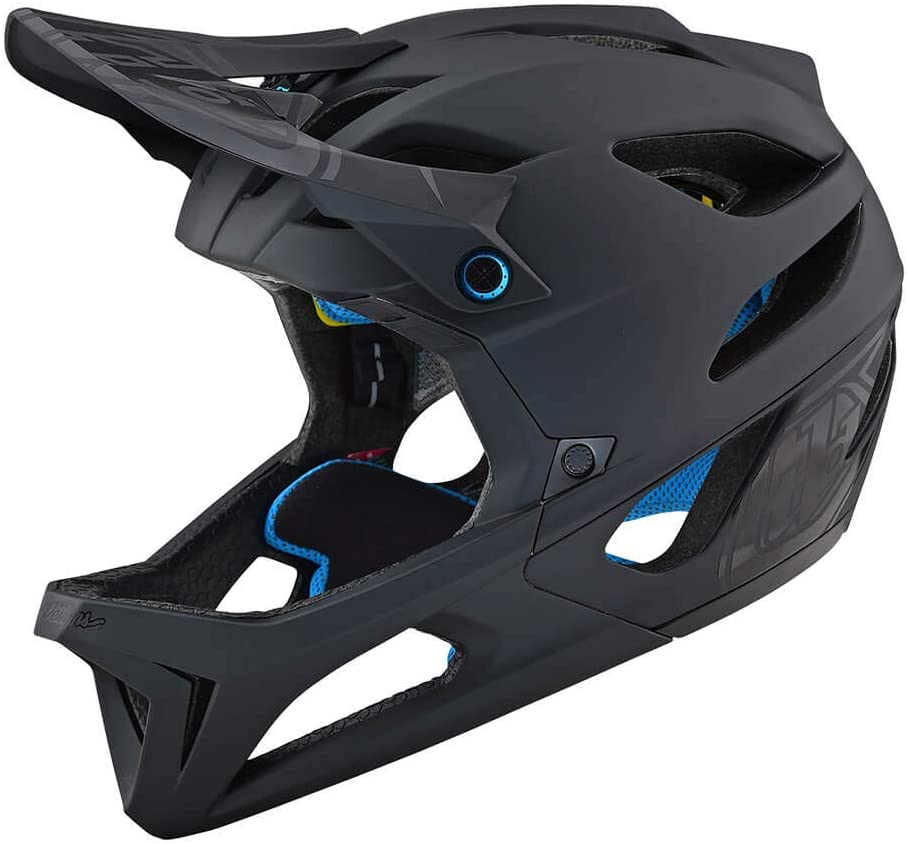
Editor’s Rating:
Quick Facts
Type: Downhill
Face: Full
Sizes: Extra small to 2-XL
Safety System
The Stage helmet has a built-in MIPS liner for increased and certified protection. There is also a Velcro attachable foam liner that goes on the MIPS lining, made of both EPS and EPP foam. The EPS is resistant to high impact, while the EPP foam is absorbent enough for lower-speed crashes. There is less padding around the cheeks in order to maintain a general cool temperature at all times.
Comfort
When it comes to airflow, the TLD Stage has it in spades. The 25 vent holes not only help you maintain a cool head while riding, but the openings are cleverly placed so that you can easily communicate with your friends while riding, and also clearly hear their responses, thanks to the vents placed over the ears. For convenient buckling, the magnetic Fidlock system facilitates adjustment on the go, even with gloves on. The unpadded straps can be an annoyance, though, as can the non-removeable mouthguard.
Size and Weight
The TLD Stage is the most lightweight full-face mountain bike helmet, weighing only a mere 24 ounces. This includes the visor, MIPS and all the padding. The sizes range from XS to XXL, and the interior pads make it easier to obtain a custom fit.
Design
This is one of the best-performing full-face mountain bike helmets in the industry. One of the main attracting points of the TDL Stage is its adjustable, stylish, and almost weightless visor. Goggles can be conveniently placed underneath the visor when you need to let your face breathe. There is also a built-in mouth guard placed on the chin bar to prevent your mouth from catching mud or small rocks while riding. To top it off, there is a magnetic GoPro Mount at the crownpoint.
Value
This is by no means a budget helmet. It is a premium high-end product that is priced accordingly. However, you pay for minimal weight, maximum protection and airflow, and outstanding comfort—all that in 12 different really cool color combinations you can choose from. If you ride for long periods of time, weight won’t become a factor of discomfort, whether you ride all-mountain or enduro.
Verdict
The best thing about this helmet is that you won’t even feel you’re wearing one. It is very breathable, featherweight (for a full-face helmet), and elegant. The snug feel ensured by the interior padding will make this helmet feel like part of your face. In the unfortunate case of a crash, Troy Lee Designs offers a discount off any new TLD helmet, reaching out to those who are seeking a replacement.
- Very light
- Very breathable
- Cool-looking
- Great protection
- Customizable fit
- Not cheap
- Lack of padding on the straps can cause discomfort to the ears
- The mouth guard is not removable
5. Most Breathable Mountain Bike Helmet: Troy Lee Designs A2
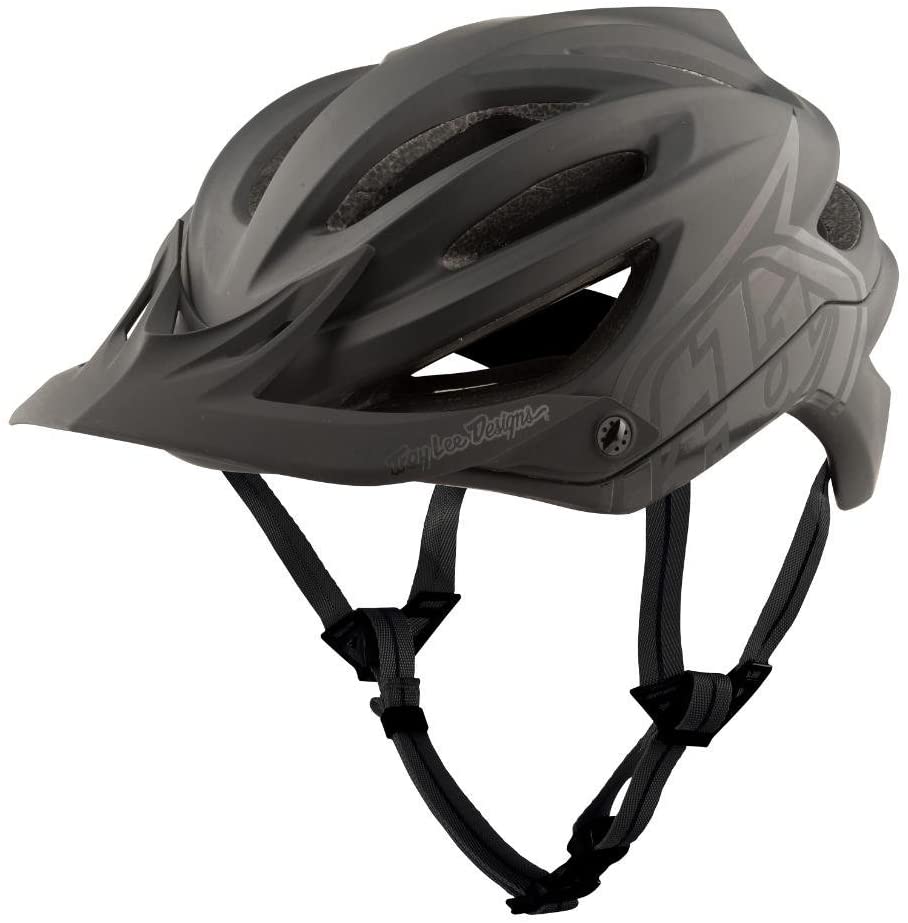
Editor’s Rating:
Quick Facts
Type: All-mountain
Face: Open
Sizes: Small to 2-XL
Safety System
On top of the MIPS liner insert, an extra layer of EPP foam is added for increased protection. The EPP is much more suitable for low-speed impacts. In combination with the high-speed protective EPS foam, a well-balanced recipe for safety is formed. The helmet’s exterior is made of a durable polycarbonate shell. There doesn’t seem to be much padding in comparison to other helmets, but rest assured that the way their placement is a classic case of quality versus quantity.
Comfort
This helmet is very well-ventilated, making it ideal for riding on hot days. The 13 vents are large enough to make the helmet feel as ventilated as one with over 20 vents. The X-Static padding system prevents odor buildup and prevents sweat from becoming a problem for your eyes—though sweat can pool on the padding itself, ruining it over time if you don’t clean it after each ride.
Size and Weight
At 13 ounces, The lightweight feel of the helmet is remarkable, considering the additional MIPS safety system lining. The interior padding makes the helmet fit comfortably on your head, and its sizes range from S to XXL. The cam-lock stabilizer makes adjustability that much easier.
Design
The TLD A2 is an open-face helmet that doesn’t dabble too much on unnecessary features. It is designed to keep the head as cool and safe as possible, on tricky climbs or steep downhill races. The back of the helmet is larger to cover more of your head, in case you fall on your back. Unfortunately, the visor placement won’t permit you to use goggles, though.
Value
This helmet provides an excellent value for the amount spent. In terms of solid XC and all-mountain helmets, it falls slightly below the middle of the price spectrum. The people at Troy Lee Designs were inspired enough to make the pad lining removable so it can be washed when sweat builds up. It also features a visor that blocks sunlight out of your eyes. It is one of the coolest-looking helmets for this value.
Verdict
The helmet’s cleverly shaped, wide vents make every ride feel like a breeze. The fact that Troy Lee Designs didn’t stop at only an MIPS safety system, but added the extra layer of EPP foam provides that extra encouragement to not be held back from giving it your all.
- Lightweight
- Not too expensive
- Well-ventilated
- MIPS safety system
- EPS and EPP foam layers
- Prone to collecting sweat
- Goggles don’t fit under visor
6. Best Lightweight Open-Face Mountain Bike Helmet: Smith Optics Forefront 2
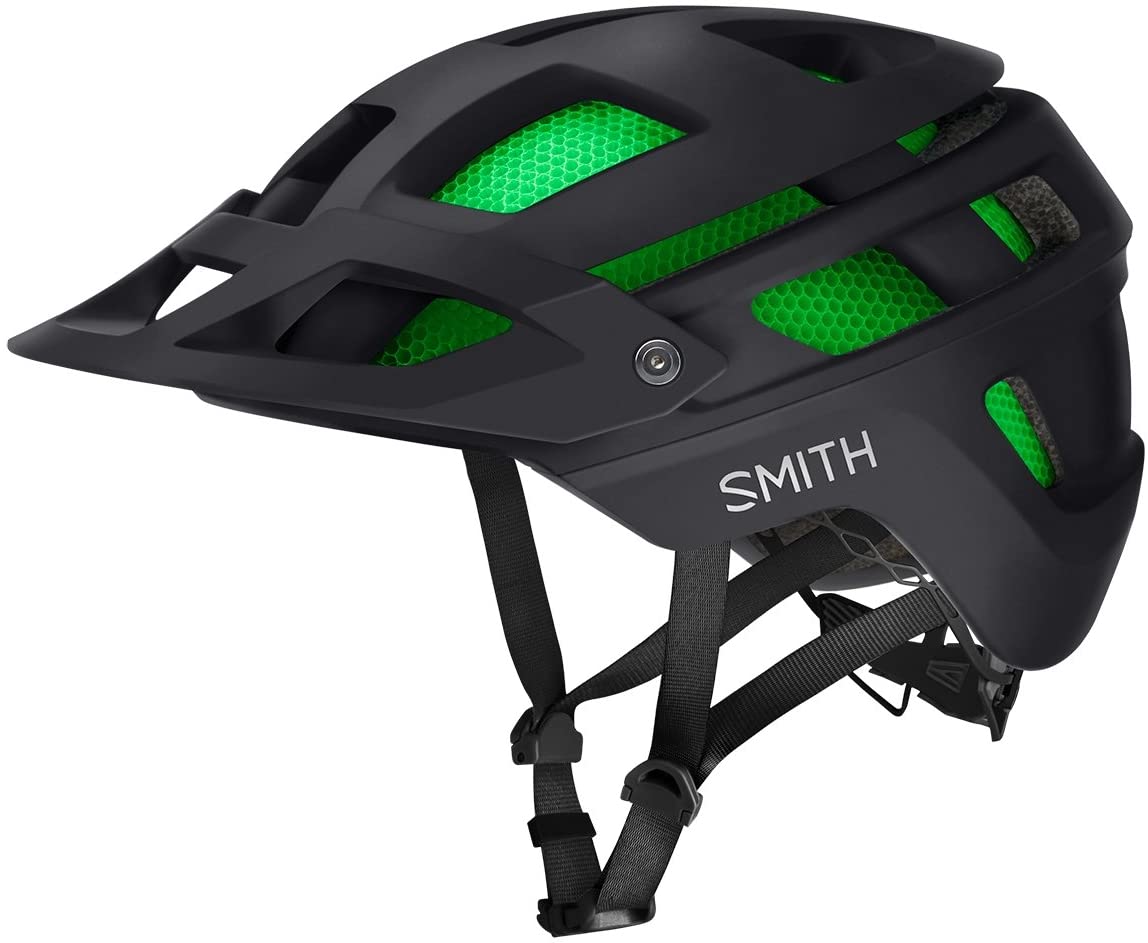
Editor’s Rating:
Quick Facts
Type: All-mountain
Face: Open
Sizes: Small to large
Safety System
The Forefront 2 uses MIPS as its featured safety system. Its 4-point harness will keep it from falling off your head in the event of a crash. Something that makes this helmet distinct in terms of look and protection is the material used instead of foam. Smith Optics opted for an In-Mold construction of Koroyd tubes, which look like a bunch of straws mushed together. The fact that a helmet can be just as protective as one with EPS foam, but be lighter and more breathable makes Koroyd the potential future in helmet safety.
Comfort
Due to the Koroyd, this helmet offers a generous amount of comfort. There are 20 large AirEvac vents that will keep your head super cool at high temperatures. Its design doesn’t look like something Swiss surrealist H.R. Giger thought up—instead, it has a more classic build that won’t feel like too much extra on your head. Apart from the vent holes, there is an an opening down the middle of the helmet that enables more airflow.
Size and Weight
This is one of the lightest helmets on our list, coming in at only 11 ounces. Its copolymer exterior is a perfect combination for the Koroyd, both reducing the size and weight of the helmet drastically.
Design
The Smith Optics Forefront 2 is an open-face helmet. It has a visor that can be adjusted in 3 positions, which also allows enough space for holding a pair of goggles or sunglasses underneath. Its design also features a mount for a GoPro or even a USB bike headlight.
Value
This helmet slightly exceeds the middle price range for mountain bike helmets. What you pay for is a revolutionary protective technology and a virtually weightless open-face lid. It comes in 11 attractive colorways you can choose from. Plus, in case of unforeseen rain on your way back, your head won’t be completely drenched in water, thanks to the Koroyd layer.
Verdict
We can’t rave enough about the Koroyd tubes. Here is a videoon how this material works on a helmet. The Smith Optics Forefront 2 is the closest thing in weight to wearing nothing on your head when riding. You will feel so free, and your performance will spike up accordingly.
- Koroyd tubes
- Very light
- GoPro / bike headlight mounting bracket
- Great ventilation
- A bit pricey
- Doesn’t come in many sizes
7. Most Comfortable Mountain Bike Helmet: Giro Montaro
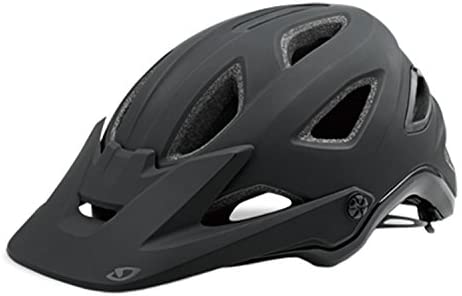
Editor’s Rating:
Quick Facts
Type: All-mountain
Face: Open
Sizes: Small to extra large
Safety System
The Montaro helmet has been built around its MIPS protection system. Its sturdy polycarbonate shell makes it resistant to scratches or further damage. The foam padding sits snugly in the helmet, so it doesn’t have to be bigger in size to accommodate the protection system.
Comfort
This is one of the most comfortable mountain bike helmets in its price range. It has 16 vents that enable air to flow through and out of the helmet, keeping your head cool. If you ride in hot or humid areas, this helmet will help you concentrate on your performance and not on the temperature. The only problem with this helmet’s comfort is that the very padding that makes it excellent tends to hold in a lot of sweat—so be sure to clean it properly between uses.
Size and Weight
The weight – or almost complete lack thereof – is one of the main draws of the Montaro. At 13 ounces, wearing this half-shell makes it feel like you’re wearing a regular hat. It has a Roc Loc 5 system that makes it easy to adjust and sit right on your head. The Montaro comes in sizes ranging from S to XL.
Design
This helmet has an open-face design. The visor is effortlessly adjustable, and can be removed for those rides where the sun isn’t a problem. A useful feature that the protective pads have is their antimicrobial lining, which prevents bacterial growth caused by sweat and odors. The Montaro also has a camera mount built-in (though it’s not as well-positioned as it could be), as well as full goggle compatibility.
Value
Giro’s Montaro is a fairly-priced mid-range helmet. What you get for this value is a comfortable helmet that accommodates the most advanced safety system, putting your worries to rest in the case of a crash. It’s ideal for cross-country and all-mountain riders who require a light shell and know they won’t tackle extreme terrain.
Verdict
For a minimal open-face helmet, it has all the necessary features to make any ride comfortable and safe.
- Not too expensive
- Roc Loc fitting system
- Good ventilation
- Goggle compatible
- Adjustable on the go
- The camera mount could be improved
- Head band starts dripping with sweat once enough is held in
8. Safest Mountain Bike Helmet: Giro Switchblade
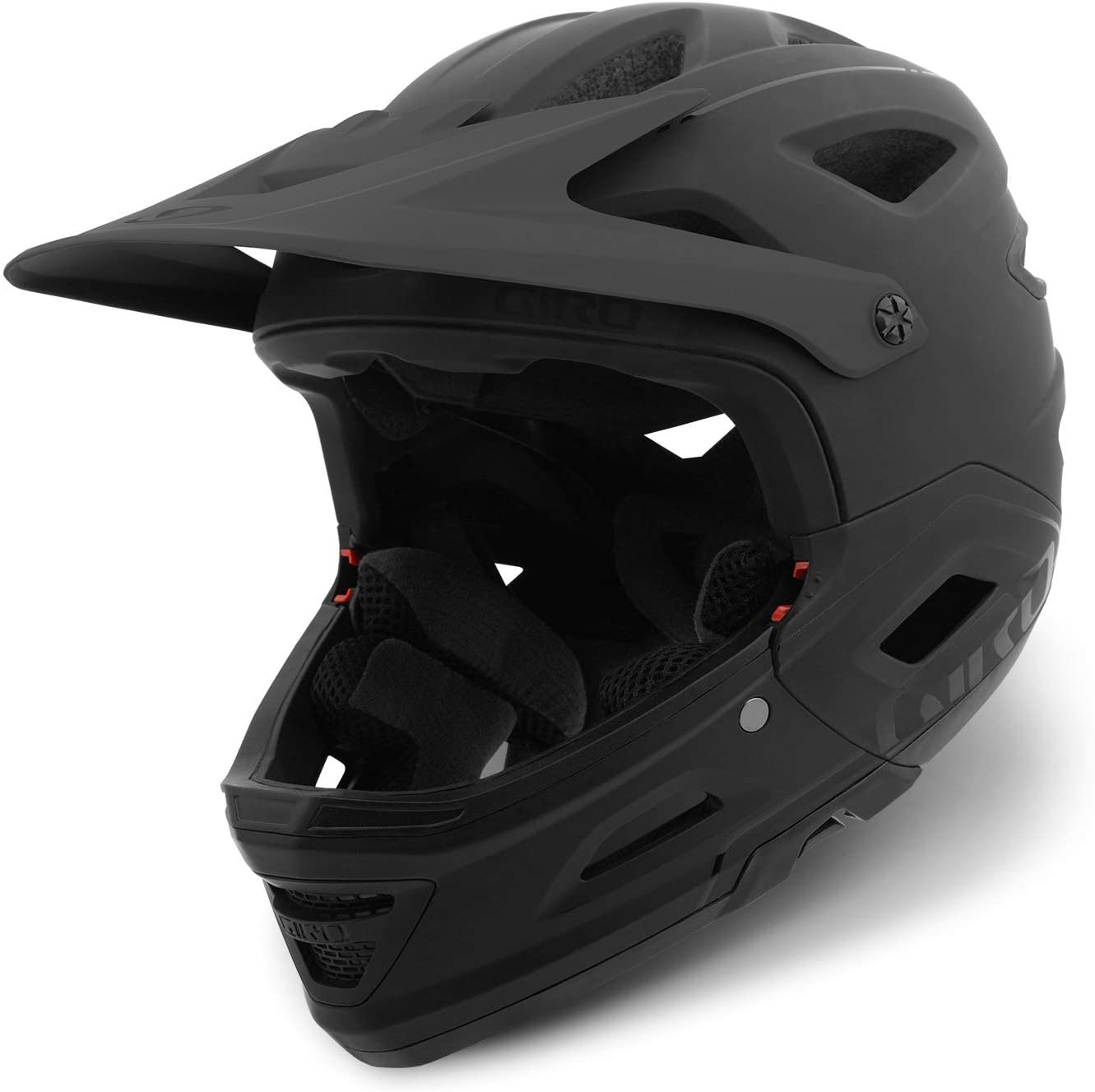
Editor’s Rating:
Quick Facts
Type: Downhill
Face: Convertible
Sizes: Small to large
Safety System
An MIPS liner makes the Switchblade a very safe choice for even the gnarliest downhill rides. In fact, this is one of the safest helmets on the market, as it is built to also cover the ears. It is a very sturdy shell that almost feels like a padded fishbowl. The removable chinbar is attached to the cheek area via 2 buttons and an effortless lift. This means that when it is in open-face mode, it still protects the cheeks and the ears, not to mention it fully protects the back of the head.
Comfort
This helmet provides a decent airflow through its 20 vents. When you take the chin bar off, the cheek pads stay on. There is also a nicely-shaped visor that both allows goggles to be worn or be put up on those uphill rides. Unfortunately, the emphasis on safety means that this helmet feels relatively heavy and can tend to get hot.
Size and Weight
The Switchblade only comes in 3 sizes (S, M, and L) but due to all the interior padding that also includes the cheek, fitting it on won’t be a problem. Think of this helmet as a more advanced form of a smaller, lighter version. This evolution comes with a weight of 28 ounces with the chinbar off, and 39 ounces with it on.
Design
Due to its removable chinbar, it is another case of two helmets in one. Use it as both an open-face helmet for the climb, and a full-face helmet for the descent. It has a Roc Loc fitting system and a camera mount on the bottom part of the visor, when it is up.
Value
If you can afford the Giro Switchblade, not only do you get one of the safest helmets on the market (certified to both CPSC and ASTM, among others) but an extra visor to replace, in case the first one breaks. For this money, you should expect a protective fortress in the form of a helmet. That is exactly what you get, whether you use it as an open-face or a full-face helmet. Two helmets and two visors, really. The visors, as well as the solid exterior make this helmet almost impermeable to rain, in case you happen to catch one during your uphill or downhill rides.
Verdict
Giro is one of the top mountain bike helmet manufacturers, so all their products deliver the best results in performance, safety, and comfort. The Switchblade is no exception. We like the fact that it guards the ears and the cheeks even if you take the chin bar off, and the fact that it easily attaches back on.
- Very safe
- Easy to transition from open-face to full-face
- Includes extra visor
- Guards cheeks and ears
- Heavy even without the chin bar on
- Can get hot due to all the padding (including cheek area)
9. Best Casual Mountain Bike Helmet: POC Octal X
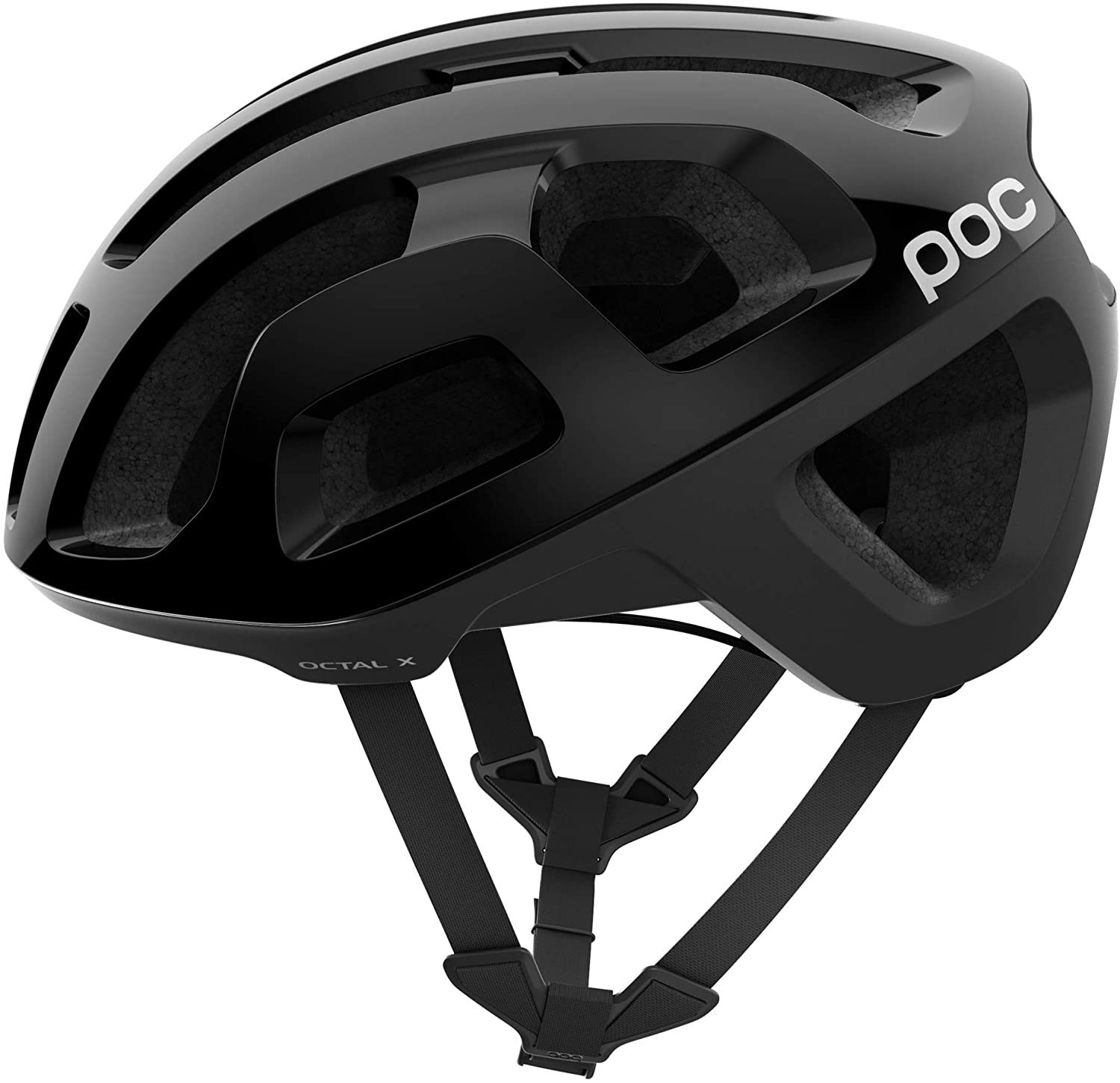
Editor’s Rating:
Quick Facts
Type: Cross-country
Face: Open
Sizes: Small to large
Safety System
Its polycarbonate, unibody build makes the Octal X apt to take on a crash without causing damage to the helmet. This is mainly due to the aramid bridge technology that keeps all the parts intact in the event of an impact. Like the POC Tectal Race, instead of an MIPS safety technology, the Octal X uses SPIN. This technology relies on silicone pads that also protect the head against angular falls.
Comfort
The Octal X has 21 large vents to keep your head cool. Although that is a large number of vents, the airflow seems a bit restricted due to the bulkier build of the helmet, in favor of additional protection. The good thing is that it doesn’t run up your forehead; it stays put once you settle on a comfortable fit. The easily adjustable straps are made of lightweight nylon, which makes it that much comfortable to keep on.
Size and Weight
Although it only comes in 3 sizes, it has a snug retention system that doesn’t require the chin straps to be trimmed, like many other helmets. The flat and soft straps prevent the burden of having rugged straps twisting underneath your chin, so it is designed to fit heads of all shapes and sizes. It is hands down the lightest helmet on our list, weighing only 9 ounces! A regular baseball hat weighs between 4 and 6 ounces, so this helmet literally weighs less than 2 stacked hats.
Design
The design is definitely unique, compared to other open-face helmets. Due to the lack of a visor, it retains the rounder features of a more regular helmet. Glasses can be stashed in the outer vents, thanks to the inclusion of what POC calls an “Eye Garage.” This is made of 2 small pads within the 2 front vents, to prevent the glasses from slipping off.
Value
In price and quality, this leans towards the high-end spectrum of mountain bike helmets. You can choose from 8 really cool color combinations. The helmet is perfect for long, recreational rides.
Verdict
The award-winning brand hits it out of the ballpark once again with this extremely light and well-ventilated open-face lid. We like that it uses the SPIN technology to prevent head injuries, as well as the easily manageable and soft fitting straps. If you only mountain bike occassionally and want a helmet that’s as suited for the road as it is for the trail, the POC Octal Race is a perfect fit—but you should really choose something more protective for intense downhill rides.
- SPIN safety technology
- Easily-adjustable, soft straps
- Eye Garage to store your glasses
- Super light
- No visor
- Not suitable for downhill rides
10. Best Lightweight Full-Face Mountain Bike Helmet: Leatt DBX 3.0
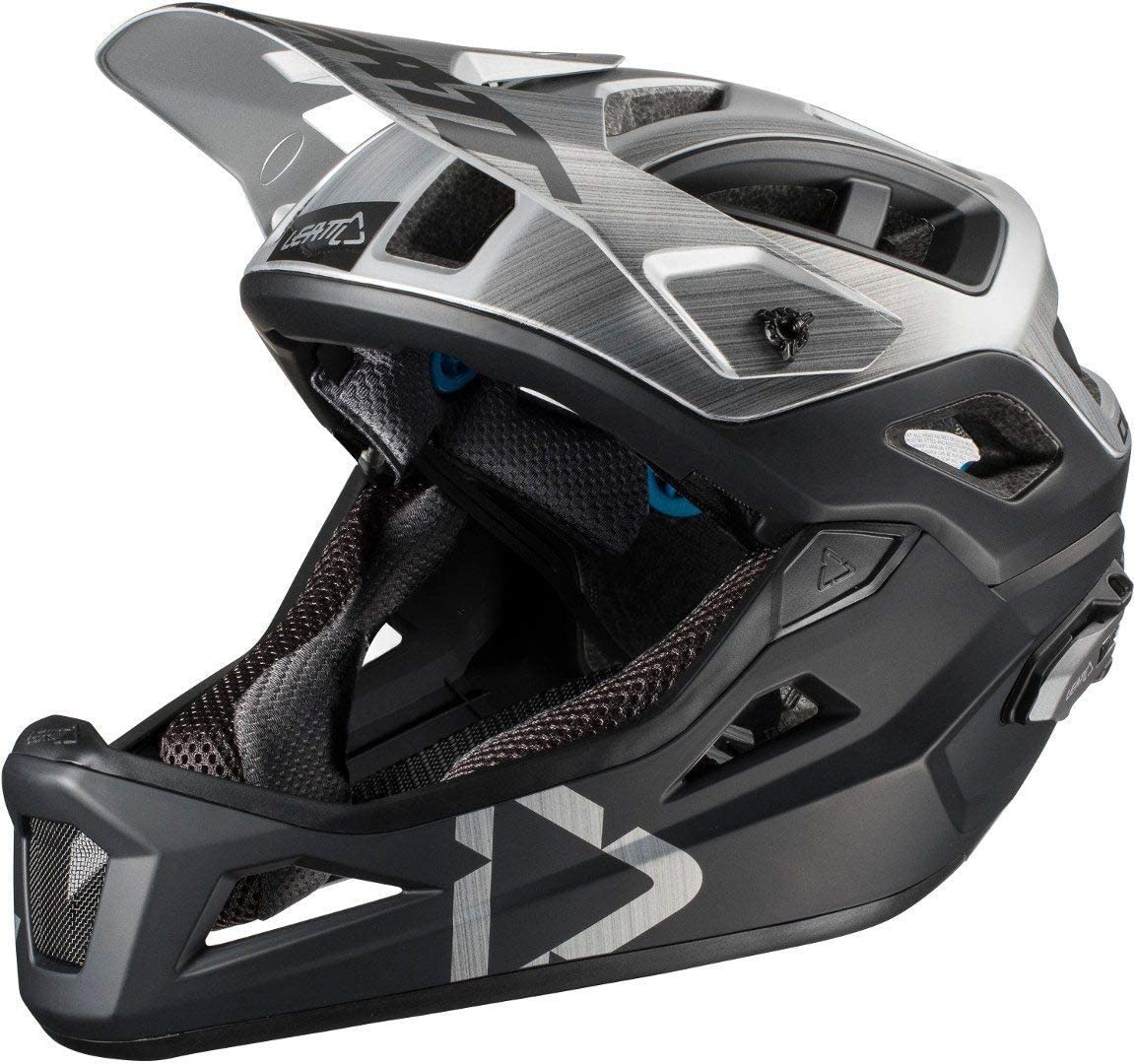
Editor’s Rating:
Quick Facts
Type: Downhill
Face: Full
Sizes: Small to large
Safety System
The main feature Leatt brings to the table through its DBX 3.0 line is a new safety system. Picking up from where the MIPS left off protection-wise, Leatt introduces the 360° Turbine Technology. This technology relies on 10 equally dispersed small turbines which are placed where the liner is susceptible to impact. The EPS and EPO foam reduce the rotational forces of the impact by absorption. Not only is EPO foam good at preventing concussions, but its weight is imperceptible. The turbines are flexible and twistable so regardless what position the helmet takes during a fall, impact is absorbed from any direction.
Comfort
The DBX 3.0 allows a decent amount of airflow through its 23 vents. There are even vents placed around the brow to prevent sweat dripping into your eyes. The visor is spacious enough to fit a pair of goggles underneath, and not only is it adjustable, but also removable.
Size and Weight
Despite the fact that its very light, the backside coverage is larger than that of other helmets. The whole helmet is a little bigger in order for the turbine technology to fit inside, but it still weighs only 12 ounces. It only comes in sizes S, M, and L, but due to the padding on the inside, you can be sure it will have a snug fit.
Design
The chin-guard on this full-face helmet can be removed, making it a great all-mountain option, too. There is no goggle strap, and the helmet can be easily adjusted by tightening a large dial. You don’t have to worry about the slightly uncomfortable Y-shaped straps, as the DBX 3.0 uses a magnetic Fidlock buckle.
Value
Though a bit expensive, this helmet is well worth the investment if you’re looking for downhill performance. When you get the box, you’ll notice that its so light you’ll wonder if it’s empty. That’s how light it feels. XC and all-mountain riders will perform effortlessly regardless of high temperatures due to its excellent breathability, too.
Verdict
Any company that focuses on designing its own safety system certainly has its hand on the pulse of what mountain bikers need. The turbine technology may soon be the new MIPS, and the good thing is that it is a built in technology, so it won’t feel like an outside object is strapped inside your helmet. It is very light and the ventilation is generous.
- Fits well
- Turbine safety technology
- Light
- Well-ventilated
- Bigger than helmets with MIPS or SPIN safety systems
Complete Guide to Mountain Bike Helmets
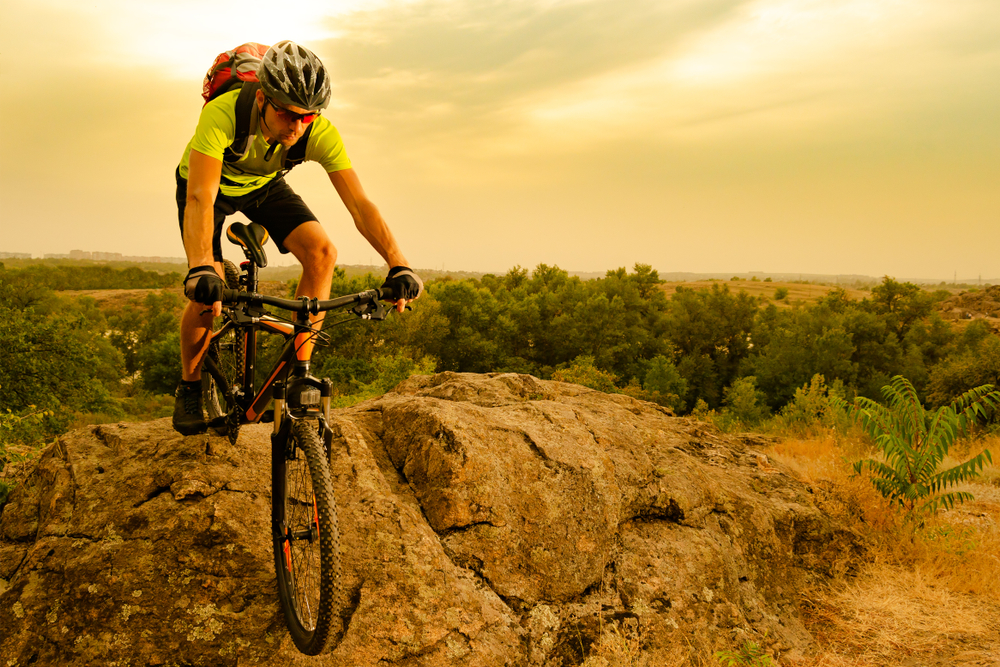
Now that you are familiar with the price range mountain bike helmets go for these days, you might be a bit reticent. A mountain bike helmet is no small investment, so you have to feel absolutely satisfied with what you are about to purchase. An extra $100 will not necessarily mean it is that much safer or overall better than a cheaper helmet. It all depends on what circumstances you know you’ll be using it at. We summarized the most important features to look for in a helmet, to help you be at peace when you part with your money.
Measuring for Size
The way to measure the perfect helmet size is taking a measuring tape and simply wrapping it around your head, preferably right above the eyebrows. Use a mirror to ensure the tape level is kept from front to back.
Most helmets offer at least three sizes for their shells. It doesn’t mean that they are inferior, as they might come with additional padding to fill up the spaces between your head and the helmet’s interior. Other helmets offer a wide range of sizes, from XS to XXL.
Mountain Bike Helmet Categories
Before discussing the criteria for a good mountain bike helmet, it is important to distinguish between the three main categories of mountain biking. These are:
- Cross-country (XC)
- All-mountain (or trail riding, with an emphasis on uphill riding)
- Downhill (or “enduro”)
Cross-Country helmets like the Giro Chronicle don’t require too many extra features that will ultimately make them heavier. Light and airy is the way to go, while not skimping out on head coverage.
All-mountain trail helmets like the POC Tectal Race Spin are more demanding in terms of design. Because all-mountain riding also includes enduro racing, the temples and back of the head should be kept safe within the shell. There should also be enough vents to allow sufficient airflow when you’re riding uphill on a hot day. Uphill is also where visors really come in handy, deterring the sun from your eyes.
Downhill rides require the safest of helmets, covering up as much of the head as possible. Full-face helmets like the Troy Lee Designs Stage are a must for enduro racers, as these also protect the chin, mouth, cheeks, and leave just enough of the face open for you to see what you are doing. Any sort of pedaling will cause you to sweat, so plenty of ventilation is also key for enduro helmets.
Face Design
The two kinds of mountain bike helmets are:
- Open-face
- Full-face
Open-face helmets such as the Troy Lee Designs A2 are primarily used for XC and trail riding, and should be as light and ventilated as possible. You will be sweating bullets if you find yourself riding uphill in a humid area or on a hot day. Look for the helmets with many vent holes and that weigh up to 18 ounces. Make sure the helmet also has a visor and that it preferably accommodates a pair of sunglasses or goggles. Since you’ll be riding uphill, you will more likely fall on your back, so a helmet with a larger coverage of the sides and the back of the head would be ideal.
Downhill riding requires more safety features. More safety features means a heavier helmet, in order to cover more areas. A full-face helmet like the Leatt DBX 3.0 protects the chin, cheeks, jaw too, something an open-face helmet doesn’t. These helmets usually include a visor too and more padding such as EPS foam (since the risk of impact is greater on your way down). Sweat will factor in regardless of temperature, since very little of your face won’t be covered by a full-face helmet, so all that inner padding mixed with effort should have generous ventilation.
Some high-end helmets, like the Bell Super 3R, are actually convertible hybrids between these two styles. The chin bar can be removed and it can become an open-helmet, so you basically have two helmets in one. All-mountain riding implies the best of both worlds, and so should the helmet. Even though they are heavier than open-face helmets, they are more versatile.
Safety
The main purpose for wearing a helmet is, of course, safety. There are 3 main certifications that all mountain bike helmets are required to meet:
All helmets on our list have theese certifications, so you can focus on personal criteria, such as fit, comfort, and weight.
Safety technology is improving, as riders find new ways to push themselves further. The main technology is MIPS, which stands for Multi-directional Impact Protection System. This is one of the reasons some helmets are more expensive, but the few extra bucks are definitely worth it. MIPS technology was designed to reduce impact caused by rotational forces. So if you crash, your head will most likely fall at an angle. Angled impact affects the head significantly more than falling straight forward or backwards (and unless you choreograph your fall, it is very improbable). Most helmets we recommend, including our top overall pick, use MIPS safety systems.
There are a few alternatives to MIPS, that pretty much have the same build and approach. The other 2 safety technologies used in helmets found on our list are:
- SPIN (patented by Swedish company POC, used in the POC Tectal Race Spin)
- 360° Turbine (patented by South African company Leatt, used in the Leatt DBX 3.0)
Basically, these technologies rely on a thin plastic layer placed between the shell and the helmet’s soft liner, connected by some small tabs. At the point of impact, this layer allows the shell to move at the angle of the fall.
Comfort
It is not enough for the exterior and even interior of a helmet to be safe, if the helmet feels like it shouldn’t be on your head. A comfortable helmet should fit just right, at approximately one inch over the eyebrows. It shouldn’t feel loose because you’ll have the tendency to straighten it while riding, so as to not reduce your vision. It shouldn’t be too tight either, so that it diverts your concentration from riding. It should almost feel like it’s part of your head.
The quality of the padding is directly proportional with the price of the helmet. The more expensive helmets will have different kinds of padding placed throughout, some softer for comfort, some rougher for impact reduction.
Sweat is another factor that affects the padding, due to the odor build up causing micro bacteria to grow. A removable pad liner is helpful for washing the material by hand. Using a washing machine may damage the pads.
If your prime consideration is comfort, the Giro Montaro would be a great choice.
Weight
A helmet should help you ride faster and smoother, rather than weigh you down. Most good helmets have an aerodynamic build and plenty of vents to even out the pads, shell weight, and protection technology.
The padding used in most helmets is a foam called EPS. Some helmets also use EPP foam, which is effective for low-speed impacts. The best helmets use both types of foam.
Open-face helmets are usually lighter due to the lack of the lower part. Full-face helmets have removable lower parts, which makes them somewhat lighter, but still doesn’t bring them down to the lightness of an open-face helmet. However, open-face helmets can’t reduce the risk of injury as efficiently as full-face helmets. So it is worth having those extra ounces on your head, if you know you’ll be racing on some rough terrain.
If you’re sick of heavy helmets weighing you down on your rides, something like the like the Smith Optics Forefront 2 will be a huge relief.
Final Thoughts
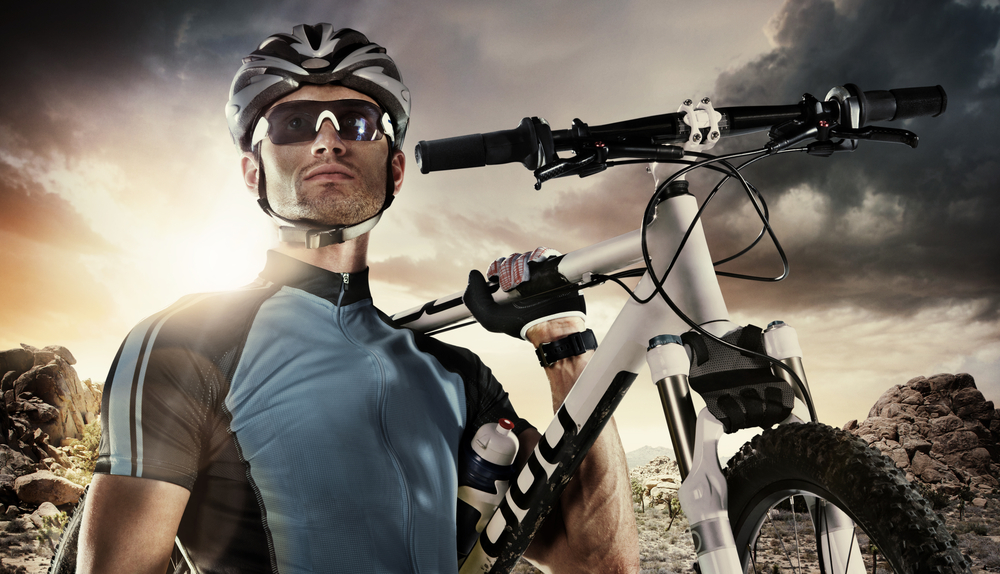
Safety and comfort are hugely important when performing an activity such as mountain biking. If you feel your safety gear is sturdy and sits right, you can be motivated to exceed your limits without feeling like a reckless daredevil.
It is important to decide if the nature of your rides is recreational or adrenaline-driven. The scare you experience during a crash can make you reassess how much your safety was worth. It is better to go through that thought process before putting yourself at risk. The right mountain bike helmet will let you focus on the trail, making your entire experience more enjoyable.
